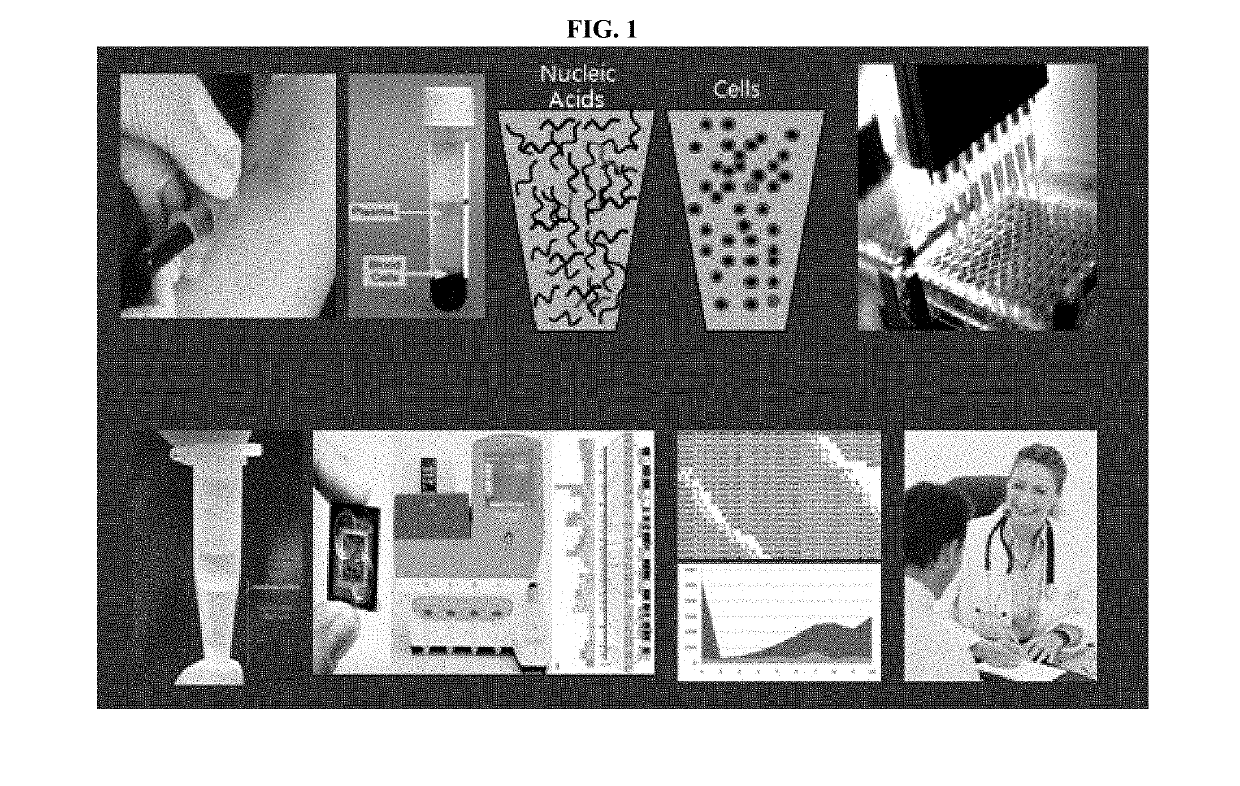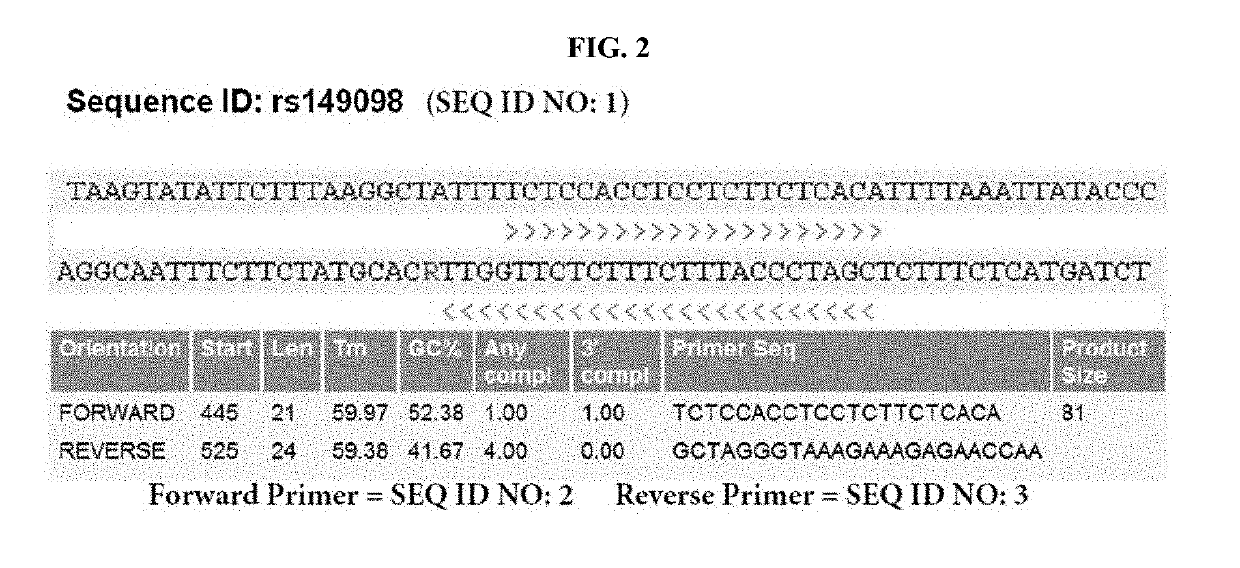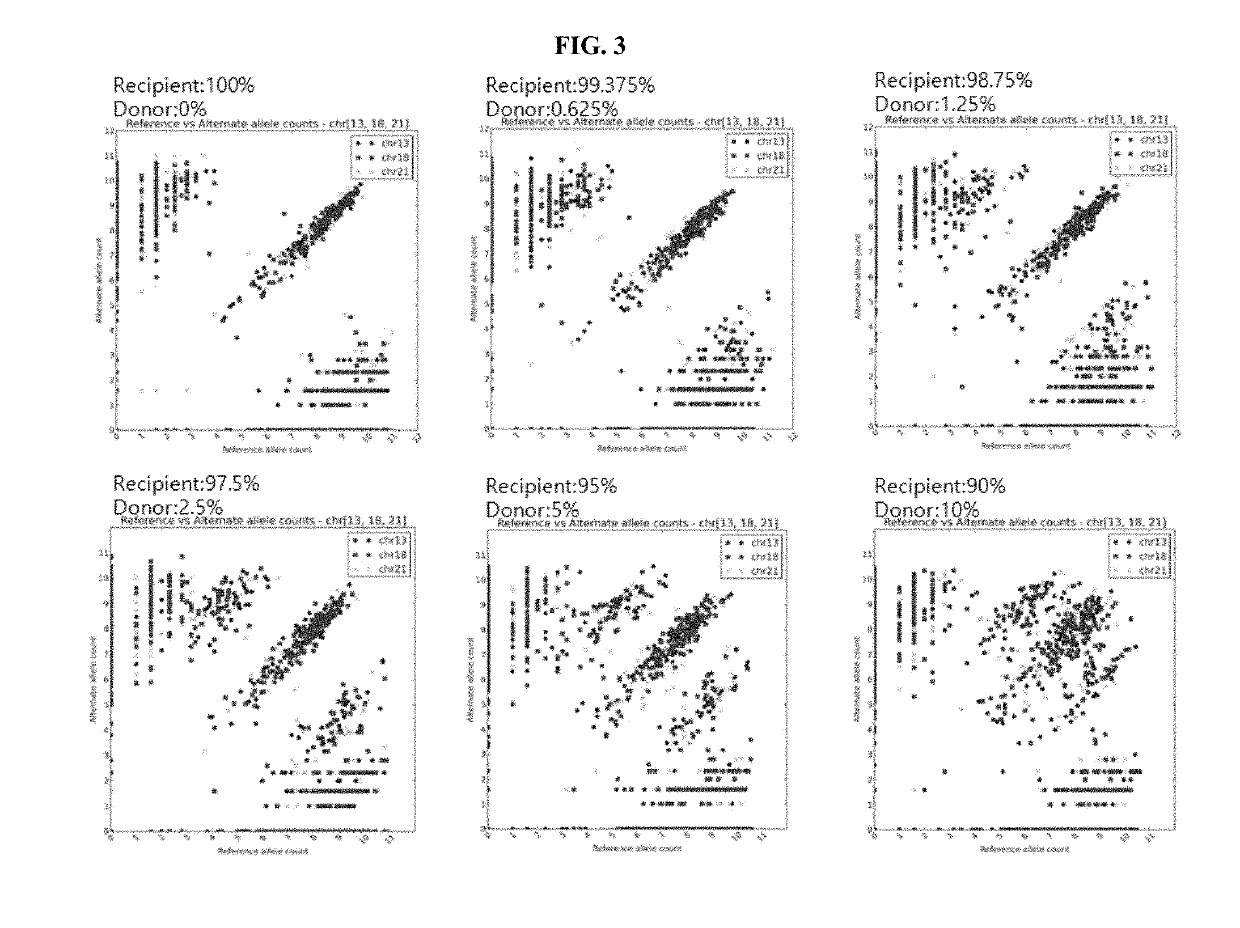Method for predicting organ transplant rejection using next-generation sequencing
a technology of organ transplant and next-generation sequencing, applied in the field of noninvasive prediction of organ transplant rejection, can solve the problems of high cost, variability between tissue biopsy physicians, and current methods for diagnosing organ transplant rejection, and achieve the effects of rapid data analysis, low cost and high accuracy
- Summary
- Abstract
- Description
- Claims
- Application Information
AI Technical Summary
Benefits of technology
Problems solved by technology
Method used
Image
Examples
example 1
n of Organ Transplant Rejection in Artificially Generated Organ Transplant Recipients
[0088]1.1: Pretreatment for Preparation and Analysis of Artificial DNA Samples from Organ Transplant Recipients
[0089]Male DNA (donor) was mixed with female DNA (recipient) such that the percentage of the male DNA in the female DNA would be 0%, 0.625%, 1.25%, 2.5%, 5% or 10%, thereby preparing artificial organ transplant patient genomic DNA samples.
[0090]To perform a TruSeq Custom Amplicon (TSCA) assay (Illumina, USA) using 100 ng of each gDNA, Custom Amplicon was prepared. A heat block was adjusted to 95° C., and 5 μl of each of DNA and CAT (Custom Amplicon Oligo Tube) was added to a 1.7-ml tube. As control reagents, 5 μl of each of ACD1 and ACP1 was also prepared. 40 μl of OHS1 (Oligo Hybridization for Sequencing Reagent 1) was added to each tube and mixed well using a pipette, and each tube was maintained at 95° C. for 1 min, and subjected to oligo hybridization at 40° C. for 80 min subsequently. ...
PUM
| Property | Measurement | Unit |
|---|---|---|
| Time | aaaaa | aaaaa |
| Time | aaaaa | aaaaa |
| Time | aaaaa | aaaaa |
Abstract
Description
Claims
Application Information
 Login to View More
Login to View More - R&D
- Intellectual Property
- Life Sciences
- Materials
- Tech Scout
- Unparalleled Data Quality
- Higher Quality Content
- 60% Fewer Hallucinations
Browse by: Latest US Patents, China's latest patents, Technical Efficacy Thesaurus, Application Domain, Technology Topic, Popular Technical Reports.
© 2025 PatSnap. All rights reserved.Legal|Privacy policy|Modern Slavery Act Transparency Statement|Sitemap|About US| Contact US: help@patsnap.com



